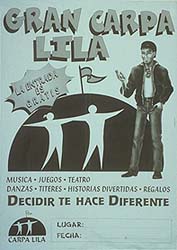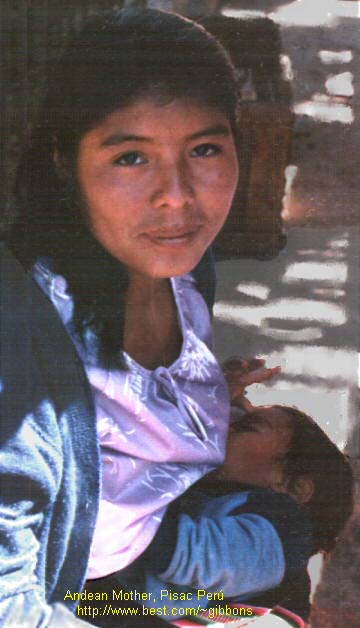
Case Analysis:
Participatory Communication
Setting up the actual tent was used to create the mood for learning. The tent drew in attention by having puppet shows and live musical acts outside. This already grabbed the publicís interest, and they were very anxious to learn once they got inside the tent.
The Lilac Tent is the fourth campaign
designed to promote these reproductive health issues, and as a result of them,
progress has been made in the past 10 years. The infant mortality rate has
decreased from 91/1 to 67/1; birth deliveries in a health facility has risen
from 40 percent to 50 percent; prenatal care has also increased from 45 percent
to 70 percent. (www.comminit.com) In addition, the concept of birth control is
now more widely known and practiced. Knowledge of at least one method of birth
control has risen from 67 percent to 87 percent; the use of condoms rose to 2.6
percent from almost nothing; IUDís to 11 percent from 4.8
percent.(www.comminit.com) Following the participatory communication model
allowed The Lilac Tent to be successful in Bolivia.
Many people were also invited to aid the NGOs in coordinating their events, for example, the municipal council, staff from the health centers, school teachers and the military. All of those figures were seen as key stakeholders, so their approval and aid was necessary for the success of their campaign.
Other key stakeholders were the John Hopkins
University Center for Communications Programs, U.S.A (JHU/CCP) and USAID. These
groups are key figures because they are funding the project. The cost of
operating a tent in each area was about 7,500 (US dollars). The campaign was
allotted $1,000,000.
The next step was to research and discover the
most effective way to send out their message so that it would have a sustained
continuity. The NGOs wanted to work to get the people that they visited to own
the project. They wanted them to feel involved and that they owned the project.
In the past, methods like development communication have proven very
unsuccessful, mainly because of their use of the magic bullet theory, which
infers that if you feed people information, they will get it. They also mainly
used top down communication, which tended to belittle those who were being fed
the information. Participatory communication does not work that way. Their main
communication channels are horizontal communication, and bottom up. The Lilac
Tent used these methods through the activities that were done inside the tents.
The Lilac Tent is a successful example of participatory communication. The goal of this campaign was to influence the rural people of Bolivia that reproductive health is a very important issue. The Lilac tent is actually a tent that is set up all around Bolivia that uses interactive games, audio visual shows, live music and images to educate them. The campaign reached people in the three main geographic areas of Bolivia: the highlands, valleys and tropics. There was one tent for each geographic region, and those tents traveled around their area from October 1998 until March 1999. In that short period of time, The Lilac Tent was able to reach 34,710 people inside the tent, but over 100,000 people were reached by observing and participating in activities around the tent.
The first stage in this process was to contact NGOs to work on each specific region to coordinate the activities. The three NGOs that got involved were SERVIR, PCI and CEPAC. Then, a team of the NGO members sought out the local authorities to request support for the project.

Each tent had a series of activities that the
participants experienced. Instead of just feeding them information, The Lilac
Tent allowed them to participate in learning activities that would help them
draw their own conclusions through communicating with one another. One example
of this is the first station that included two cut out wood figures of a man and
a woman. The people in the group improvise a dialogue between the two figures.
Also used as an ice breaker, this activity introduces the important topics of
gender and sexuality. There is a facilitator that can guide the discussion by
asking questions, but all of the communication is done horizontally within the
group. These activities were specifically designed to give the people of Bolivia
a voice and to give them alternatives to the way that things were today. For
example, the issue of infant mortality is a big problem in Bolivia. But, The
Lilac Tent is helping people to realize that there can be items like birth
control to prevent pregnancy and that there are health facilities that can
improve the birthing process to make it safer for the women giving birth. These
activities also help the people define their role in the system. Especially, the
women involved. These activities show women that they are important and they
deserve safer facilities and respect.
